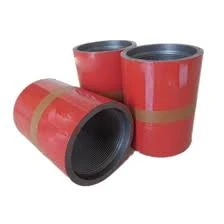- Afrikaans
- Albanian
- Amharic
- Arabic
- Armenian
- Azerbaijani
- Basque
- Belarusian
- Bengali
- Bosnian
- Bulgarian
- Catalan
- Cebuano
- Corsican
- Croatian
- Czech
- Danish
- Dutch
- English
- Esperanto
- Estonian
- Finnish
- French
- Frisian
- Galician
- Georgian
- German
- Greek
- Gujarati
- Haitian Creole
- hausa
- hawaiian
- Hebrew
- Hindi
- Miao
- Hungarian
- Icelandic
- igbo
- Indonesian
- irish
- Italian
- Japanese
- Javanese
- Kannada
- kazakh
- Khmer
- Rwandese
- Korean
- Kurdish
- Kyrgyz
- Lao
- Latin
- Latvian
- Lithuanian
- Luxembourgish
- Macedonian
- Malgashi
- Malay
- Malayalam
- Maltese
- Maori
- Marathi
- Mongolian
- Myanmar
- Nepali
- Norwegian
- Norwegian
- Occitan
- Pashto
- Persian
- Polish
- Portuguese
- Punjabi
- Romanian
- Russian
- Samoan
- Scottish Gaelic
- Serbian
- Sesotho
- Shona
- Sindhi
- Sinhala
- Slovak
- Slovenian
- Somali
- Spanish
- Sundanese
- Swahili
- Swedish
- Tagalog
- Tajik
- Tamil
- Tatar
- Telugu
- Thai
- Turkish
- Turkmen
- Ukrainian
- Urdu
- Uighur
- Uzbek
- Vietnamese
- Welsh
- Bantu
- Yiddish
- Yoruba
- Zulu
pipe threader
Understanding Pipe Threaders The Essential Tool for Pipe Joining
In the world of plumbing and construction, the ability to create secure and reliable connections is paramount. One of the most essential tools for achieving this is the pipe threader. This device is designed to cut threads into the ends of pipes, allowing for easy joining without the need for welding or extensive fabrication. Whether you are a professional plumber or a DIY enthusiast, understanding how pipe threaders work and their applications can be incredibly beneficial.
The Basics of Pipe Threading
Pipe threading involves the process of cutting grooves into the surface of a pipe to create a helical ridge that allows it to be screwed into a fitting. This process is crucial for ensuring that connections between pipes are leak-proof and secure. Typically, pipes made from materials such as steel, iron, or PVC can be threaded, although the method may vary based on the material's properties.
Pipe threaders come in two main types manual and electric. Manual pipe threaders, often resembling a set of wrenches, rely on human power to rotate the tool and cut the pipe. They are portable and suitable for small projects or tight spaces. On the other hand, electric pipe threaders provide more power and efficiency, capable of cutting threads on larger pipes with less physical effort. These tools are typically used in industrial settings or larger plumbing jobs where speed and accuracy are crucial.
How to Use a Pipe Threader
Using a pipe threader requires attention to detail and adherence to safety protocols. First, it is essential to select the right size of die and cutter based on the pipe diameter. Once the correct tools are selected, the pipe must be securely clamped in place to prevent movement during the threading process.
pipe threader

After ensuring that the pipe is properly positioned, the user applies cutting oil to reduce friction and heat buildup during threading, which can lead to tool wear and compromised pipe integrity. Next, the die is placed onto the end of the pipe, and the threading process begins. For manual threaders, the user must turn the tool while applying steady pressure to ensure even cuts. For electric models, the user simply needs to guide the tool along the pipe.
Once the threading is complete, the finished threads should be checked for precision, ensuring that they have a consistent depth and width. Any irregularities can lead to leaks or weak connections, so it is vital to achieve a high-quality finish.
Applications and Benefits
Pipe threaders are widely used in various applications, from residential plumbing to large-scale construction projects. They allow for the rapid assembly of pipe systems, including water supply lines, gas pipes, and HVAC systems, enhancing efficiency and reliability in installations.
The primary benefit of using a pipe threader is the ability to create strong threaded connections without the need for specialized skills. This accessibility enables more individuals to engage in plumbing work, fostering a culture of self-reliance in maintenance and repairs.
In conclusion, whether you are working on a home improvement project or managing a commercial plumbing job, understanding and utilizing a pipe threader can greatly improve your efficiency and the quality of your work. As an indispensable tool in the plumbing industry, the pipe threader plays a vital role in ensuring that our modern infrastructure is both functional and durable.
-
Tubing Pup Joints: Essential Components for Oil and Gas OperationsNewsJul.10,2025
-
Pup Joints: Essential Components for Reliable Drilling OperationsNewsJul.10,2025
-
Pipe Couplings: Connecting Your World EfficientlyNewsJul.10,2025
-
Mastering Oilfield Operations with Quality Tubing and CasingNewsJul.10,2025
-
High-Quality Casing Couplings for Every NeedNewsJul.10,2025
-
Boost Your Drilling Efficiency with Premium Crossover Tools & Seating NipplesNewsJul.10,2025







